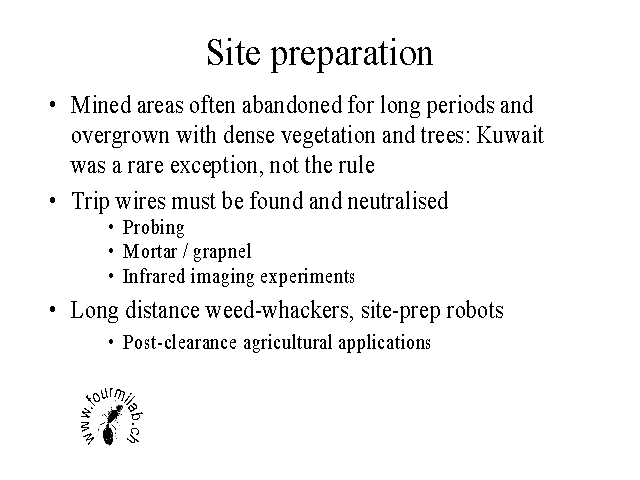

|
|
|
Mined terrain has often been abandoned for years before clearance begins, and during that time dense vegetation may have grown which impedes the clearance effort. In some areas of Angola, trees with trunks of up to 20 cm have to be removed, some with roots which have grown around mines.
Kuwait was a rare exception in being a desert in which most mines were either laid in well-mapped regular fields or scattered on the surface. The relatively quick demining there does not portend similar results elsewhere.
Before any search for buried pressure-detonated mines can commence, trip wire mines must be found and neutralised. In dense vegetation, a monofilament tripwire is very difficult to detect. Mortars which fire a winch-pulled grapnel to trigger trip wires and infrared sensors which attempt to discriminate trip wires from vegetation are currently being explored.
The first applications of robots and teleoperated vehicles to demining may not be in detection or clearance, but rather for site preparation. Survivable remote-controlled or autonomous vegetation clearers could dramatically reduce the work for the probing team which followed them into the field.